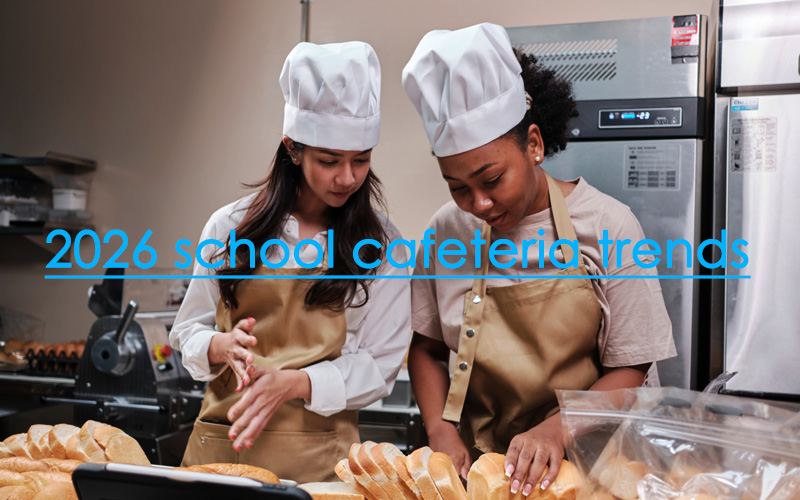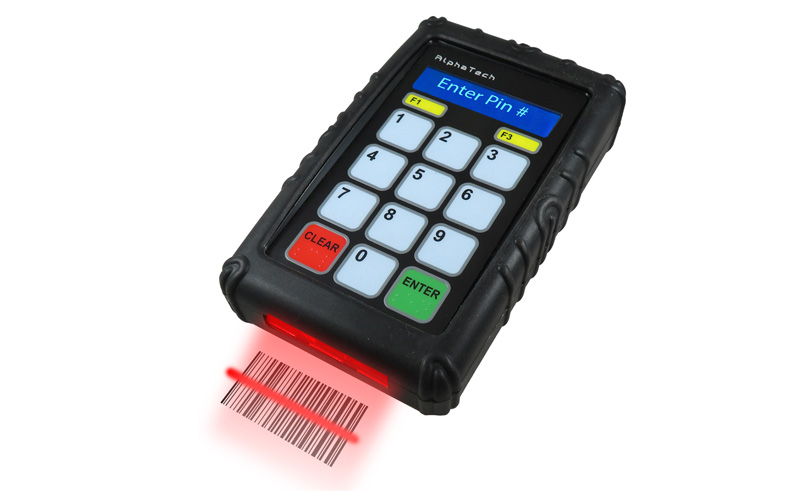As we approach 2026, school cafeteria managers are faced with new trends reflecting a change in student’s palettes, a demand for healthier options and the implementation of new technologies.
Here are 7 school cafeteria trends to watch for in 2026:
1. Plant-Based Menus
One of the most significant trends is the surge in plant-based meals. As awareness of health, sustainability, and animal welfare increases, students are leaning towards vegetarian and vegan options. Cafeterias can respond to this trend by offering a variety of plant-based dishes, featuring ingredients like black beans, quinoa, lentils, vegetables and tofu that are both nutritious and flavorful. Collaborating with local suppliers for fresh produce can also enhance meal options while supporting local farmers.
2. Nutrition Facts
With the rise of health-conscious students and parents, showcasing food nutrition labels has become essential. Cafeterias must ensure that menus are clearly labeled with calorie counts, ingredient sources, and possible allergens. Digital displays, mobile access to menus or printed signage can help students make healthier eating choices.
3. Global Flavors
Today’s students are more adventurous with their food choices than ever before. In 2026, expect school cafeterias to feature an increased variety of global flavors, showcasing dishes from different cultures. Asian, European, Mediterranean, and Latin American cuisines can be introduced to diversify menus and make lunchtime an exciting culinary adventure. Additionally, fusion dishes—such as taco bowls with Mediterranean ingredients—can appeal to diverse palates while promoting inclusivity and cultural awareness.
4. Sustainable Practices
K12 school cafeterias should keep embracing sustainability in 2026. This includes reducing food waste through smarter inventory management, composting programs, and utilizing eco-friendly materials for serving and packaging.
5. Recognizing the connection between nutrition and mental wellness
Cafeterias will provide meals designed to boost focus, moods and mental clarity, using ingredients rich in omega-3s, fiber, and antioxidants. Programs that educate students on the benefits of mental wellness through nutrition can also be introduced to increase awareness.
6. Getting students involved
Cafeteria managers can engage students by involving them in menu planning through surveys or taste tests, enabling them to voice their preferences. Events like themed lunch days or community cook-offs can also promote interaction between students and staff, creating an inviting atmosphere that encourages healthy eating habits.
7. Integration of new technologies
Advancements in technology will play a pivotal role in improving efficiency. Digital ordering systems will become more popular, allowing students to pre-order meals through apps or kiosks. When it comes to making school lunch lines move faster, using faster input devices will be a must to run POS systems.
AlphaTechs USA’s QR scanners and RFID tag readers will make scanning school IDs a breeze, decreasing lunch wait times and frustration for both students and staff.
QR scanners are 1D compatible, available as pin pad combo AlphaScan QR Express or as stand-alone orbital Alpha-201 and Alpha-202 handheld models. AlphaScan RFID pin pad combo is your fastest option, also offering the option to manually enter codes.
Our QR and RFID models are fully programmable, compatible with all US school lunch POS software. Each unit is covered by our extensive 3-year warranty.
Based in Orange County, California, AlphaTechs USA is a premier provider of school lunch scanners and pin pads for US school cafeterias.

